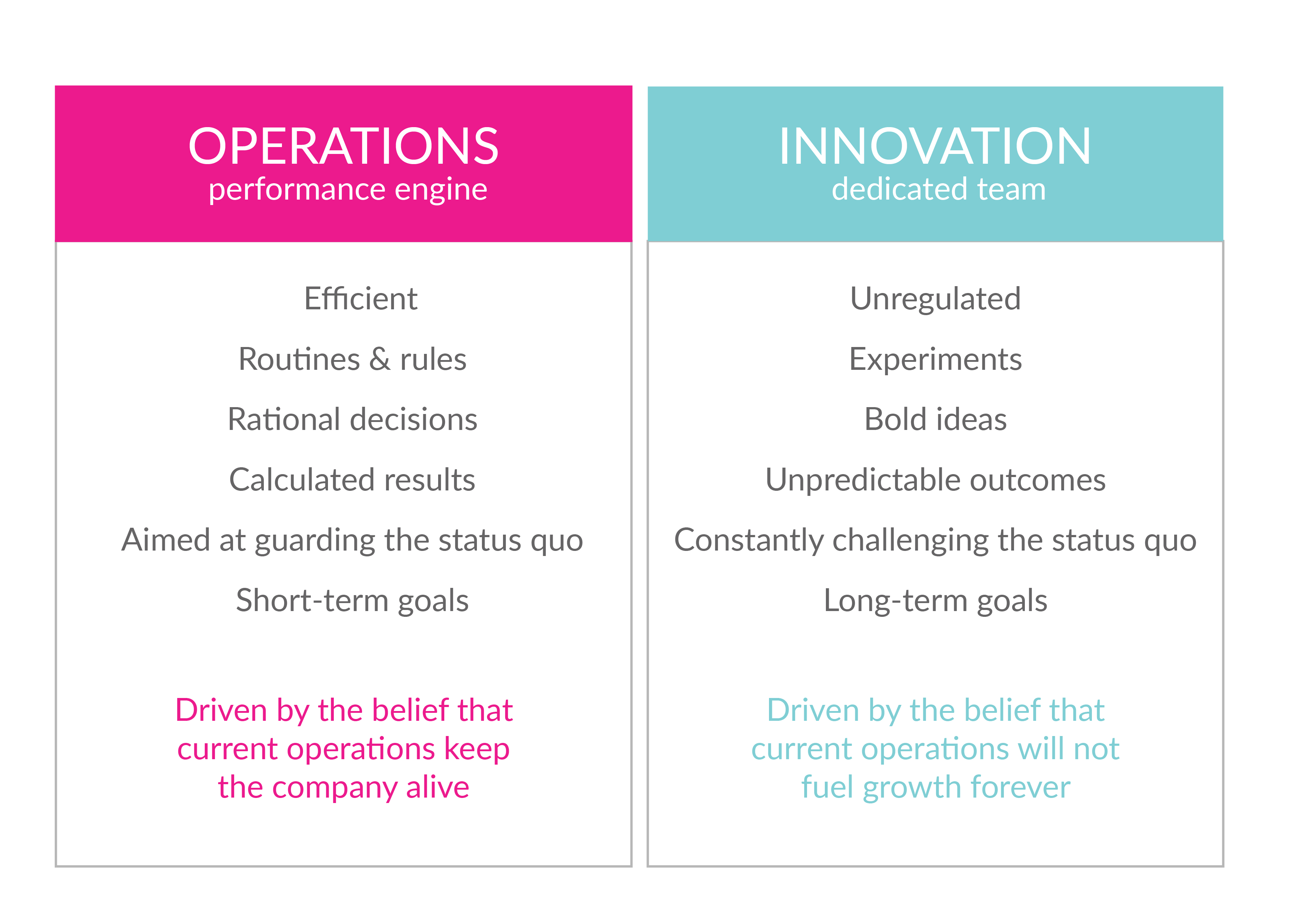By: Diedrik Syoen
Here’s a wild guess: the majority of large enterprises will probably claim they know exactly what innovation is all about. Yet, in spite of impressive resources, big companies are responsible for only a small fraction of disruptive innovations. What is at the root of this paradox? Why does so much innovation fail? And more importantly: what can companies do about it?
In its 2014 Global Innovation 1000 study, PwC surveyed 500 innovation leaders on how they expected their innovation practices to evolve. Only 27% felt they had mastered the elements needed for innovation success over the next ten years. This uncertainty doesn’t have to be surprising. While innovation has a place on every corporate agenda, wide disparities continue to exist in how well it pays off. Or, as the PwC report puts it:
“R&D is often seen as a black box, where large sums of money go in and innovative
products and services only sometimes come out.”
Although the reasons for failed innovation are manifold, we’ll tackle three causes that keep surfacing in enterprises large and small.
1. Your company is not built to innovate
Corporations exist to make money. That might sound harsh, but it’s what they’re designed to do. In order to deliver consistent and reliable results, companies turn their core business into a so-called ‘performance engine’: every task and process is made as efficient, repeatable and predictable as possible. When perfected, the performance engine obtains scale and becomes an immensely powerful foundation for the company.
Unfortunately, this is also the point where trouble starts brewing. When performance engines are operating at full speed, a lot of companies will switch to ‘autopilot’. Operational efficiency is still continually improved, but the bulk of time and resources is invested in business as usual: everything that keeps the engine running. The company itself gradually becomes risk averse. Non-routine tasks and processes with unpredictable outcomes are avoided, which is exactly how innovation is killed.
- The solution: resist switching to ‘autopilot’ by building dedicated innovation teams. Bring creative energy and management skills together and give them the autonomy to focus on uncertain, non-routine business opportunities.
2. Your operations can’t stand innovation (and vice versa)
It is a common misconception that companies can’t simultaneously excel at innovation and operations. It is true, however, that both worlds seem like irreconcilable opposites:
In most companies, these differences simmer beneath the surface, but it some cases they turn into downright hostility. In times of constant disruption, such an ‘innovation war’ is the last thing you need. It does explain, however, why most executives decide to separate and isolate the innovation team from the rest of the company. Unfortunately, the idea that isolation fosters innovation is flat wrong.
- The solution: Recognize that there are fundamental tensions between performance engines and innovation teams, but understand that both are just as important for the survival of the company. Although the innovation team should be separate, it should definitely not be isolated. They have to leverage the assets and capabilities of the performance engine. All innovation initiatives should be executed by a versatile partnership between operations and innovation.
3. There is too much focus on ideas
Innovation initiatives are often heavily ‘front-loaded’. At the beginning of the project, everyone is excited about the hunt for the next big idea. After this creative phase, however, the enthusiasm dies off and nothing really happens with the ideas. Very few companies realize that innovation is a two-part challenge: first you have to come up with great ideas, but then you have to execute them.
- The solution: Build your dedicated innovation teams wisely. Identify the skills needed to take innovation from ideas to execution – both creative and managerial. Hire the best people and make sure they have a plan.
About the author
 Diederik Syoen unites the innovation aspect & psychological research at INNDUCE.me. It is the first tool to help you compose successful teams & to develop a strategy that boosts your innovation success. Diederik manages the software team and at the same time Diederik is responsible for the marketing of the tool. Which skills are needed to build an innovation dream team? Subscribe to the INNDUCE.me blog and find out more in coming blog posts!
Diederik Syoen unites the innovation aspect & psychological research at INNDUCE.me. It is the first tool to help you compose successful teams & to develop a strategy that boosts your innovation success. Diederik manages the software team and at the same time Diederik is responsible for the marketing of the tool. Which skills are needed to build an innovation dream team? Subscribe to the INNDUCE.me blog and find out more in coming blog posts!
References
- Govindarajan, V. & Trimble, C. (2010) The Other Side of Innovation: Solving the Execution Challenge. Boston, Massachusetts: Harvard Business Review Press.
- Jaruzelski, B. Staack, V. Goehle, B. (2014) Global Innovation 1000. Proven Paths to Innovation Success – Ten years of research reveal the best R&D strategies for the decade ahead. PwC Strategy & Business, issue 77 Winter 2014

